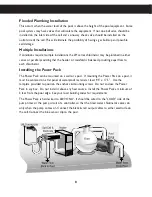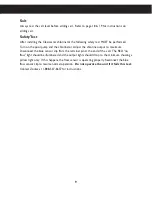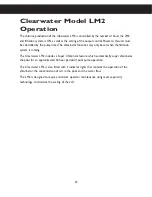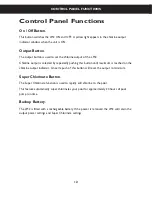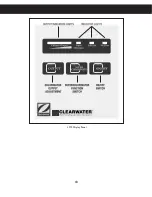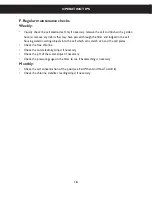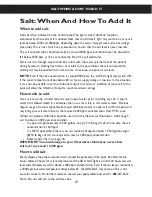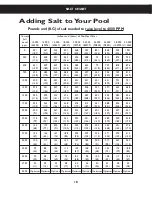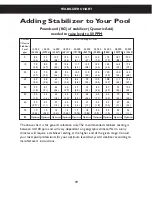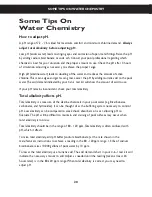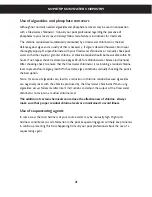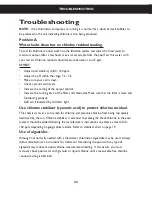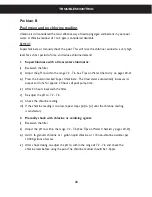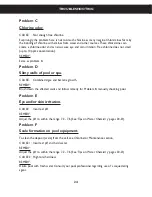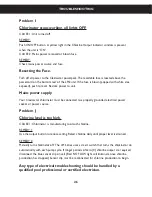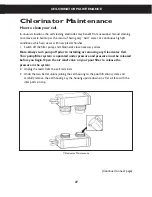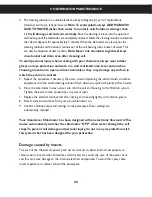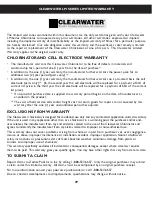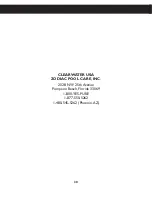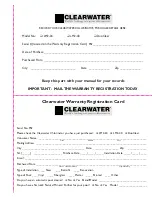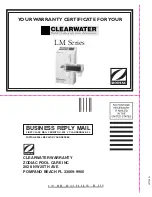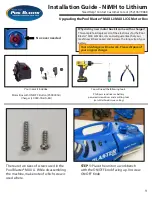
21
SOME TIPS ON WATER CHEMISTRY
Use of algaecides and phosphate removers
Although not normally needed, algaecides and phosphate removers may be used in conjunction
with a Clearwater chlorinator. Consult your pool professional regarding the presence of
phosphates in your local area and always follow manufacturers instructions for treatment.
The chlorine residual level automatically maintained by a Clearwater chlorinator is the best
defense against algae and is usually all that is necessary. If algae is observed however, brush spot
thoroughly, adjust pH, super-chlorinate with your Clearwater chlorinator or manually shock pool
water with either liquid or granular chlorine. A chlorine residual should be measurable within 24
hours. If not, repeat shock treatment (see pages 22-23 for additional water balance instructions).
After shocking, check to ensure that the Clearwater chlorinator is maintaining a residual chlorine
level to prevent future algae growth.With extreme algae conditions, manually shocking the pool is
the best option.
Note: Overuse of algaecides can lead to a reduction in chlorine residual because algaecides
can negatively react with the chlorine produced by the Clearwater chlorinator.When using
algaecides, always follow manufacturer's instructions and adjust the output of the Clearwater
chlorinator to maintain a residual chlorine level.
The addition of certain chemicals can reduce the effectiveness of chlorine. Always
make sure that proper residual chlorine levels are maintained to avoid illness.
Use of sequestoring agents
In some areas the total hardness of your source water may be unusually high. High total
hardness contributes to scale formation in the pool. Sequestoring agents will help keep minerals
in solution, preventing this from happening. Consult your pool professional about the use of a
sequestoring agent.


